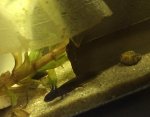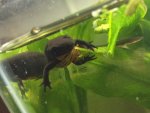Don't be daft! The way to become a good keeper of any animal that's new to you is listen to advice from the seasoned members on here and read everything you can find on the species you have.
You obviously care about your newt and from what I can see, you've taken on board the advice are doing your best to provide it with the correct environment.
Being a competent keeper will come as you gain experience pick up more knowledge over time. You can't run before you can walk, but I think you're doing fine at the moment!







